The Halona Blowhole on the southeastern side of Oahu is a sight to behold… from a distance.
Last updated: March 21, 2025
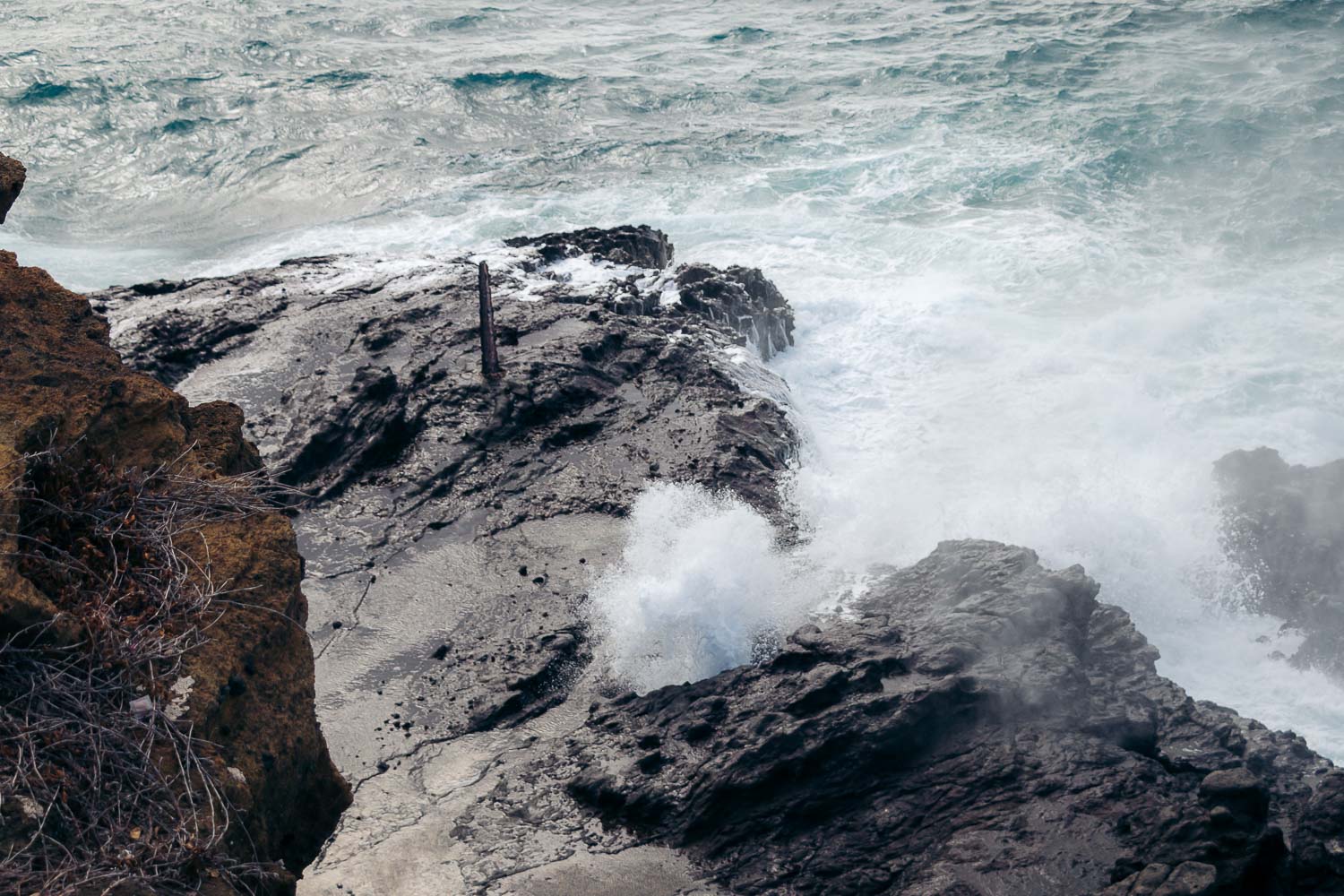
Halona Blowhole: A Remarkable Gem with Dangerous Trait on Oahu
Blowholes keep me on my toes every time I touch the ground of Hawaii. Otherwise referred to as volcanic geysers, these natural wonders spit colossal jets of water, some of which can reach dozens of feet in the air.
Remarkable in sight, with intriguing tales that originate in the ancient time and span thousands of years, Hawaiian blowholes are also some of the most dangerous places on the islands. The Halona Blowhole is not an exception, keeping its distinct “family” features and traditions intact.
Visiting Halona Blowhole
Halona means “lookout” in Hawaiian. And this is exactly what the Halona Blowhole is: a roadside overlook that peers down at the rugged shore surrounded by miles upon miles of the multicolored ocean.
We’ve never seen the Pacific glistering with so many shades like it was that early morning at the Halona Blowhole. Turquoise at the shore, right below the ancient lava vent, the water gradually changed its tones from aquamarine to royal blue and even black. The pattern looked almost like a rainbow. An oceanic rainbow with all possible shades of blue and occasional atolls on the sides.
The star of this surreal natural show was the Halona Blowhole. Shooting heavy columns of water up to 30 feet in the air, it kept disturbing the color display with a foamy veil that slipped onto the shore and then back into the ocean after each and every “eruption”.
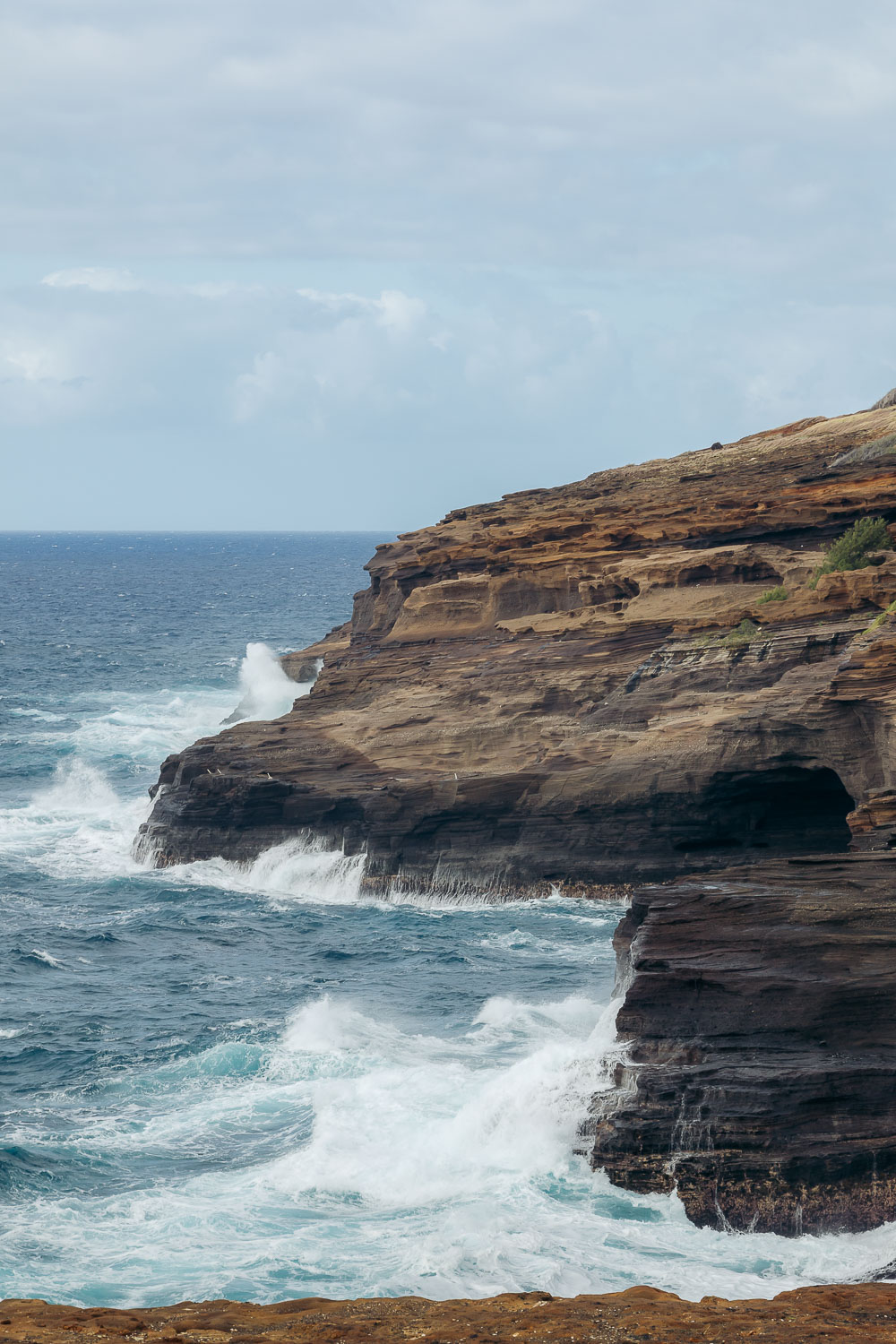
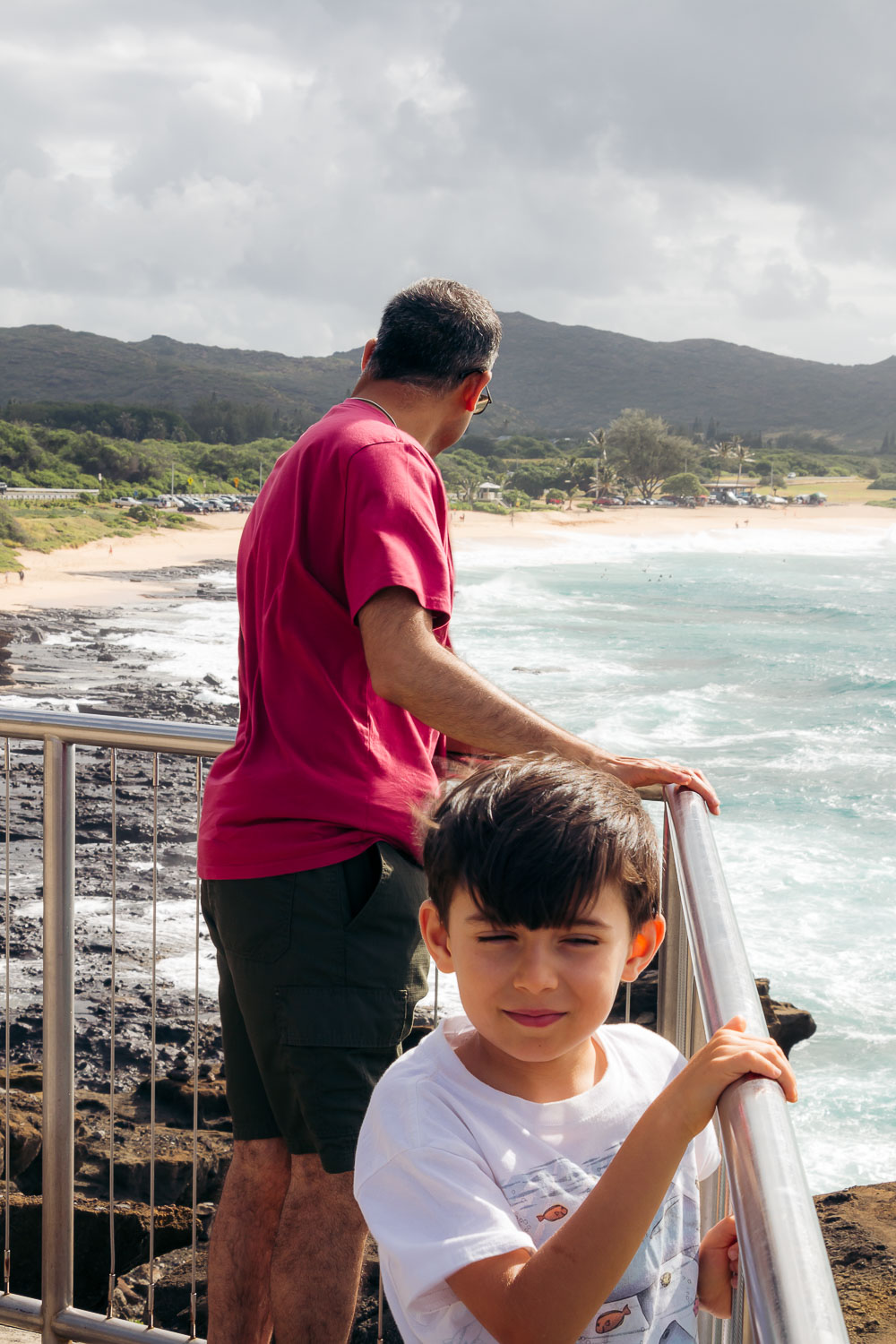
How to View Halona Blowhole
Despite the Halona Blowhole Overlook’s close proximity to the Kalanianaole Highway, which makes it easy to stop here while heading east along the coast, you don’t want to get too close to the site. Ample warning signs and fences aren’t here for decoration. So stay where you are, at the roadside parking area, and wait for the spectacular show to start.
It doesn’t take long – often less than a minute – to witness ocean currents trapped in the underwater cave bursting out, shooting into the air, and then smashing with a deafening sound onto the hardened lava.
The temptation to get closer to the action and feel more mist on your skin may kick in at this exact moment. Some spectators give in to this persistent call too easily. Jumping over a low separating barrier, they head straight to the Halona Blowhole.
The majority come back unharmed. A few, the most adventurous or foolish ones, that ache to look inside the bottomless hole on the shore, get swept into the ocean. They lose their lives in a silly attempt to outsmart the ocean and its faithful servant, the Halona Blowhole.
How to View: Read the signage at the site, assess the weather conditions, and do what you please to do. But remember, Oahu’s currents and ocean’s behavior are unpredictable beyond this point. High swells can wash over the shore and drag back into the ocean’s deep mouth anything and anybody that is within its reach.
The shooting geysers of the Halona Blowhole themselves look awe-inspiring from a distance. Right at the edge of the lava hole, they present a deadly threat. Oblivious onlookers can be sucked inside in seconds. They may not be that fortunate in fighting the greedy ocean and getting back on the shore alive.
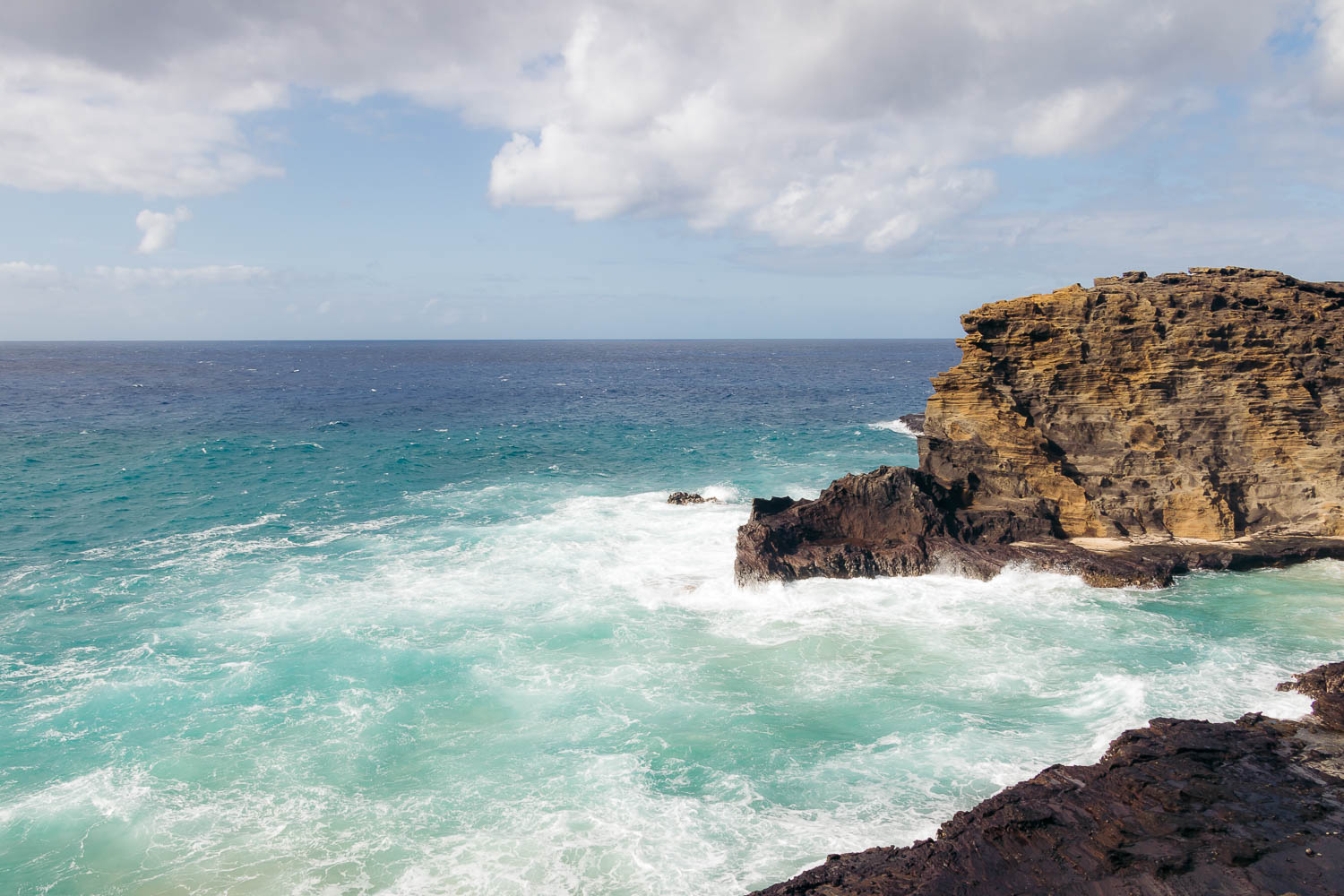
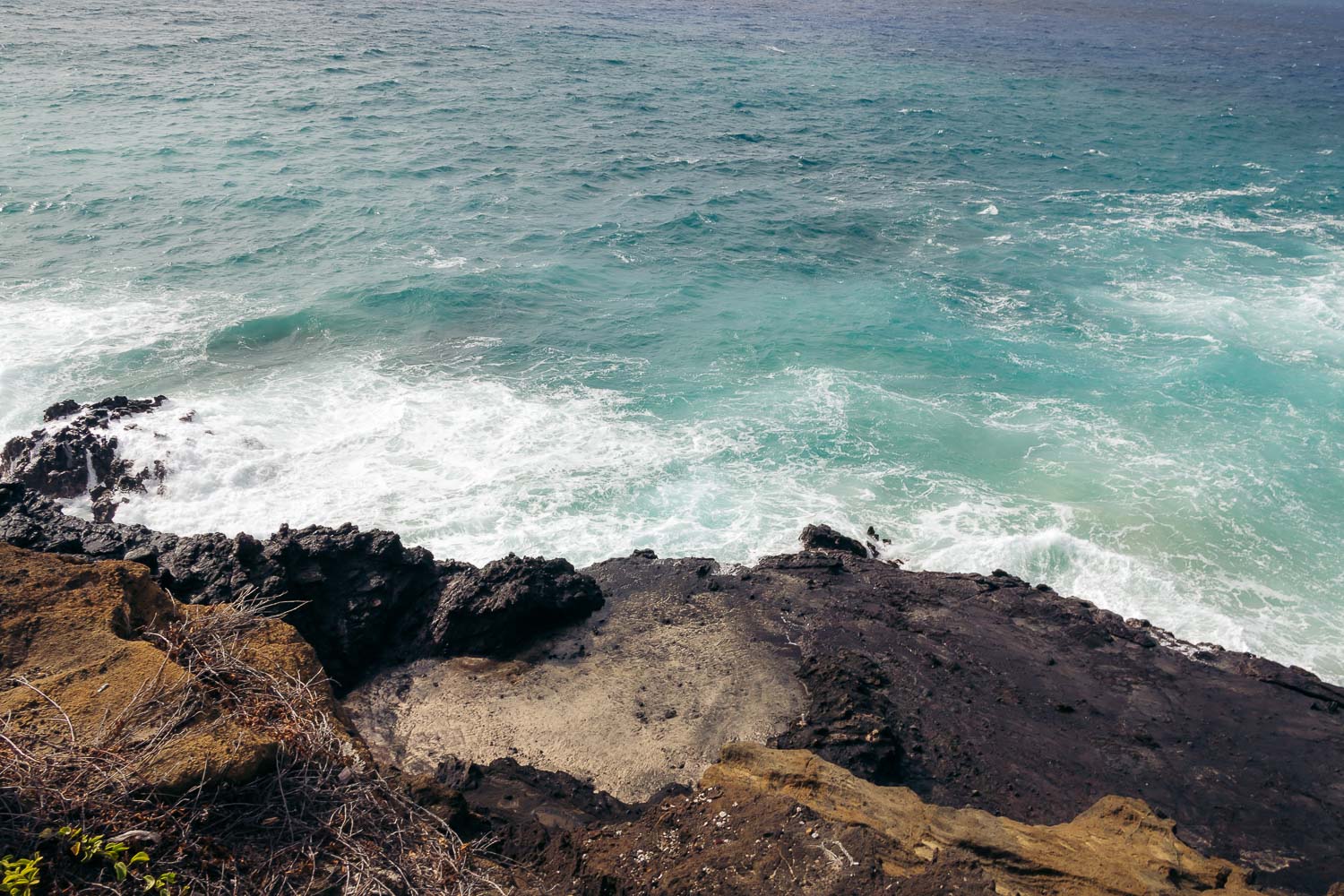
It All Starts with a Volcano…
The origins of the Halona Blowhole go back thousands of years ago when the landscape of Oahu was reshaped once again by the then active Koko Head volcano. As the melted lava rushed to the ocean, it marked the coast with its archetypal imprints.
In some places, it drilled miles-long tunnels. Closer to the ocean, already worn out by the journey, it pierced small holes into the rocky shore. The ocean took over where the lava had left off, boring a hole at the bottom of the rock formation. And just like that, the creation of the Halona Blowhole was finished.
The Best Time to See Halona Blowhole’s “Eruptions”
When an ocean swell gets trapped in the underground cavern, it frantically searches for a way to escape. Churning and pushed by another wave, it disperses itself through the only opening available, a hole in the “ceiling” of the Halona underwater cave. Heavy jets of water shoot high up in the air and, relieved, smash back onto the rocks.
During the winter months (November to February), when the trade winds create the strongest swell, the eruptions of the Halona Blowhole can reach up to 30 feet in the air. Yet regardless of the season, the site is the most active during the high tide. This is also the time when it’s the most dangerous.
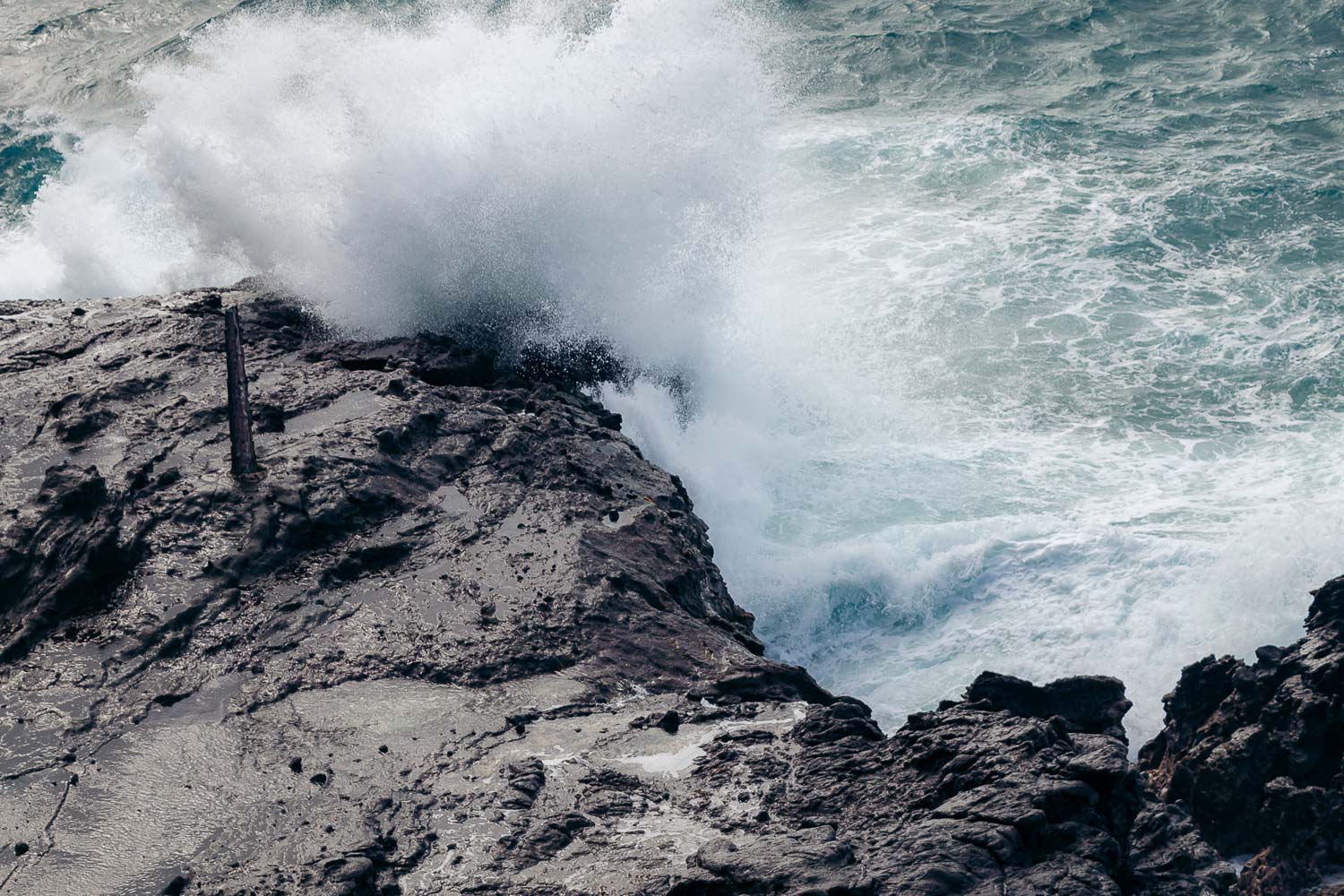
Places to Visit near Halona Blowhole
The Halona Blowhole is surrounded by some of the most popular and hidden gems of Oahu. You need at least a few hours to check them all. Start with the nearest and travel farther northeast or west.
- Halona Beach Cove. A secluded cove known for its turquoise waters and striking cliffs, Halona Beach Cove sits just 400 feet southwest of the Halona Blowhole.
- Sandy Beach. Located to the east of the Halona Blowhole, Sandy Beach is popular for its pounding waves perfect for bodysurfing and sandy shore, a dream location for sunbathing.
- Lana’i Lookout. While driving from Honolulu in the southeastern direction, pull over about a mile before reaching the Halona Blowhole. The Lana’i Lookout is one of three scenic overlooks along the Kalanianaole Highway. On a clear day, you can see three Hawaiian Islands from here. Lana’i sits to your right. Molokai’s takes the left position. And Maui centers itself in between them.
- Hanauma Bay. Hanauma Bay is known as one of the best snorkeling places on Oahu. And it’s only 2 miles southwest of the Halona Blowhole.
- China Walls and Spitting Cave. Proceed farther southwest until you reach China Walls and Spitting Cave. Both places allure experienced cliff jumpers and scenic view appreciators.
- Koko Head Stairs. The extinct volcano that gave birth to the Halona Blowhole, the Koko Head Stairs serve as a less crowded hiking alternative to the popular Diamond Head with sweeping vistas of southeastern Oahu.
- Koko Crater Botanical Garden. From the Halona Blowhole, head to the right along the Kalanianaole Highway and then left onto Kealahou and Kokonani Streets to get to the Koko Crater Botanical Garden, one of the hidden gems of Oahu.
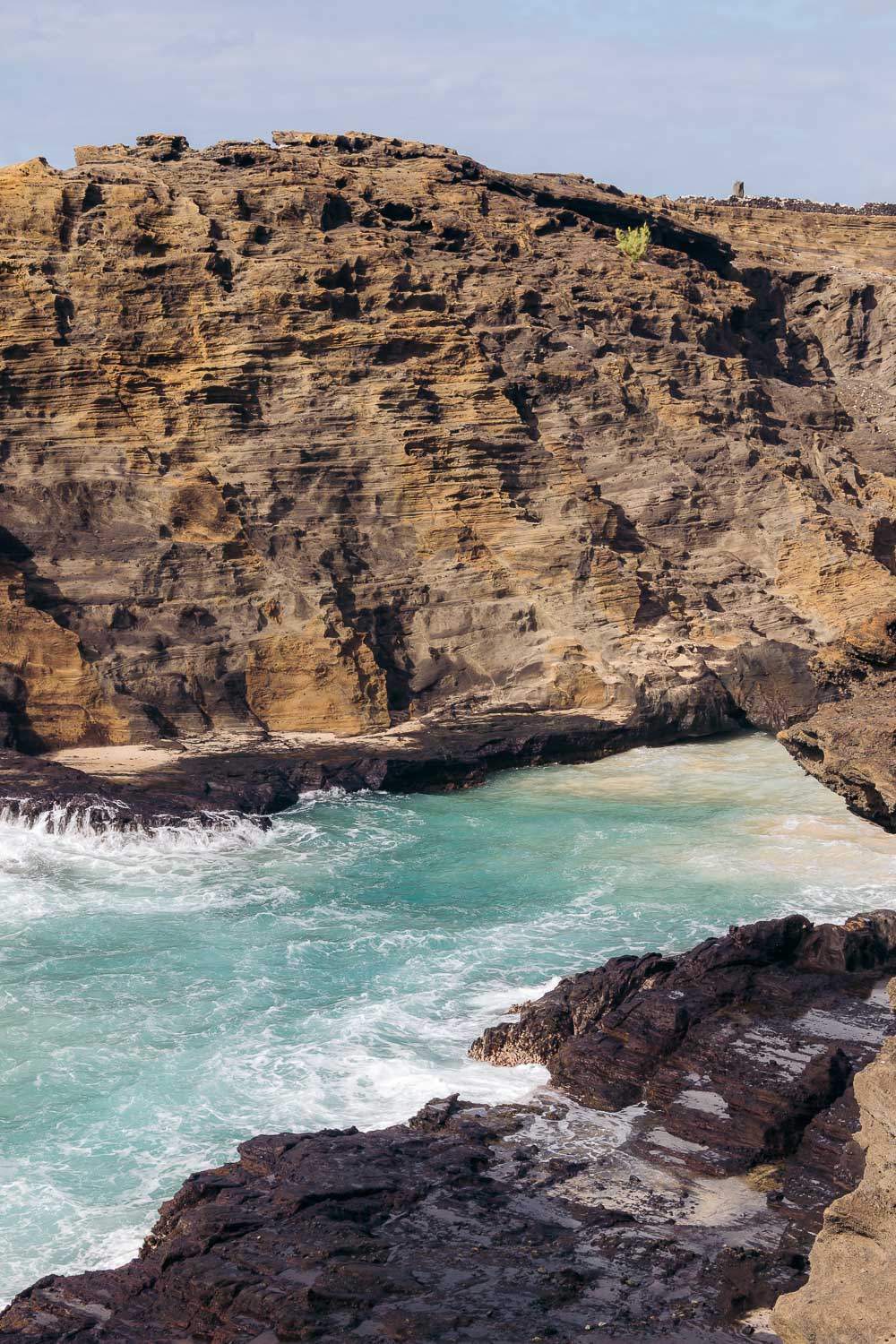
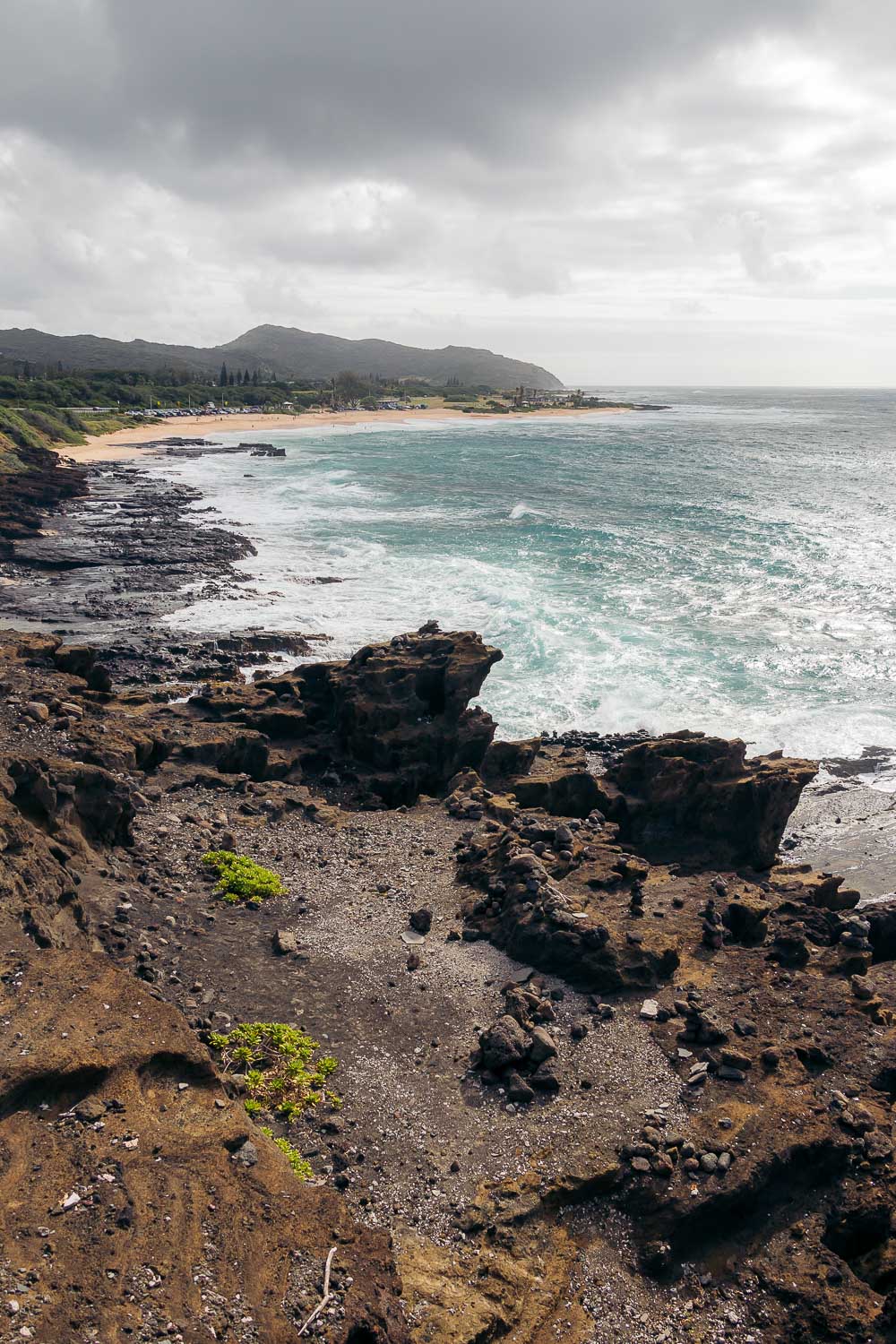
Read Next
- BLOWHOLE ON MAUI: Nakalele Blowhole – Maui’s Beautiful and Dangerous Jewel
- KAUAI’S BLOWHOLE: Spouting Horn: One of the Largest Blowholes in Hawaii